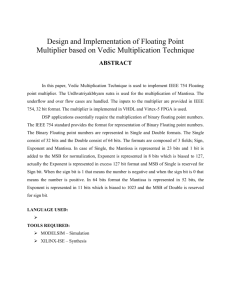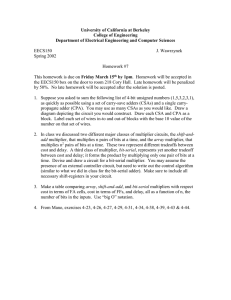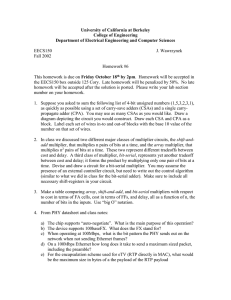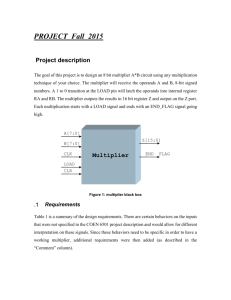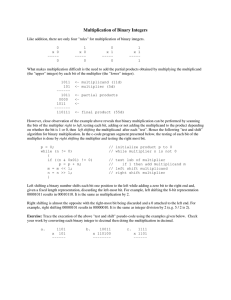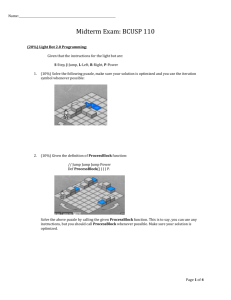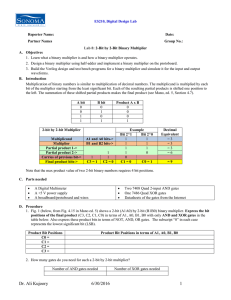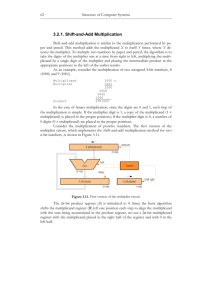Multiplier
advertisement
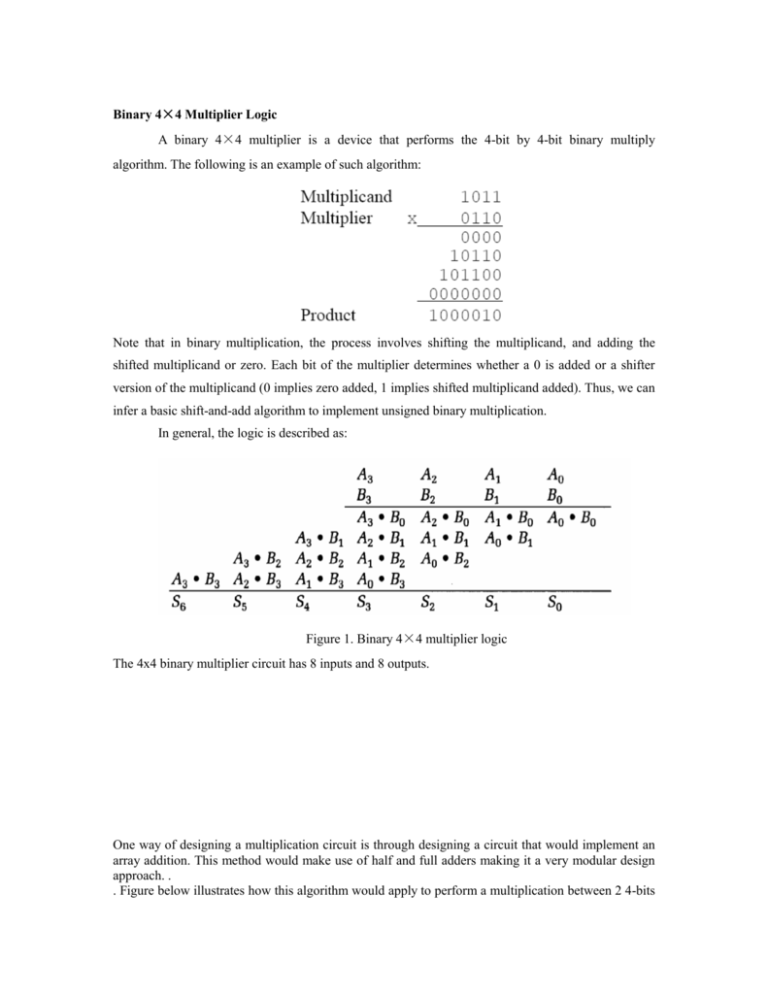
Binary 4×4 Multiplier Logic A binary 4×4 multiplier is a device that performs the 4-bit by 4-bit binary multiply algorithm. The following is an example of such algorithm: Note that in binary multiplication, the process involves shifting the multiplicand, and adding the shifted multiplicand or zero. Each bit of the multiplier determines whether a 0 is added or a shifter version of the multiplicand (0 implies zero added, 1 implies shifted multiplicand added). Thus, we can infer a basic shift-and-add algorithm to implement unsigned binary multiplication. In general, the logic is described as: Figure 1. Binary 4×4 multiplier logic The 4x4 binary multiplier circuit has 8 inputs and 8 outputs. One way of designing a multiplication circuit is through designing a circuit that would implement an array addition. This method would make use of half and full adders making it a very modular design approach. . . Figure below illustrates how this algorithm would apply to perform a multiplication between 2 4-bits unsigned integer multiplication. 4*4 Multiplier Figure 12 shows a block diagram for a basic 4 bit multiplier unit. A [4 bits] 4-bit Unsigned Multiplier B [4 bits] + C Y7 Y [8 bits] A3 A2 A1 A0 Inputs x B3 B2 B1 B0 C B0 x A3 B0 x A2 B0 x A1 B0 x A0 + B1 x A3 B1 x A2 B1 x A1 B1 x A0 C sum sum sum sum + B2 x A3 B2 x A2 B2 x A1 B2 x A0 Internal Signals C sum sum sum sum B3 x A3 B3 x A2 B3 x A1 B3 x A0 sum Y6 A [4 bits] B [4 bits] sum Y5 8 bits Transmission Gate sum Y4 Ain [4 bits] Bin [4 bits] sum Y3 Y2 Y1 Y0 4-bit Unsigned Multiplier Y in [8 bits] Inverter Clk ‘ Clk Outputs 8 bits Transmission Gate Y [8 bits]
